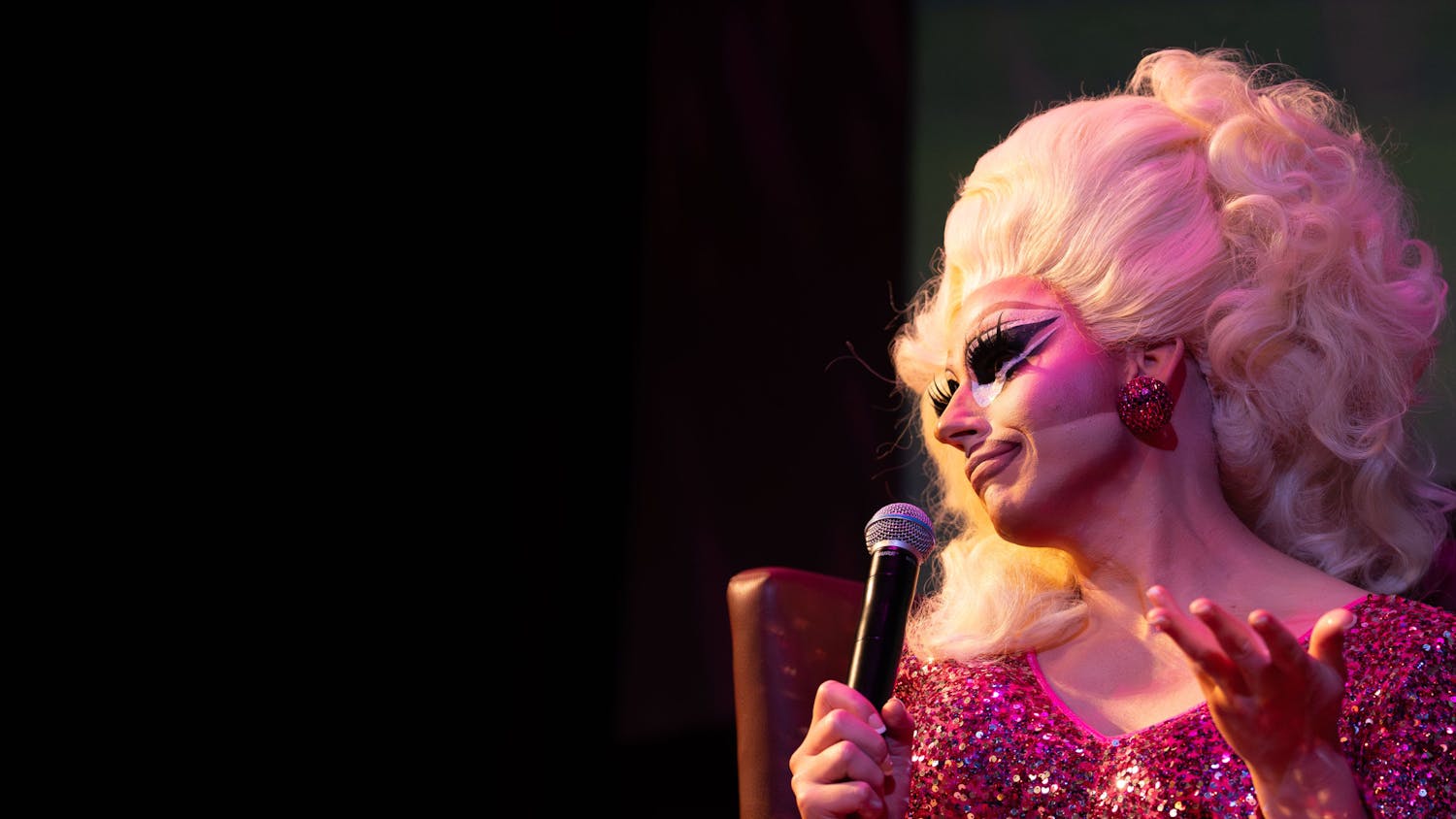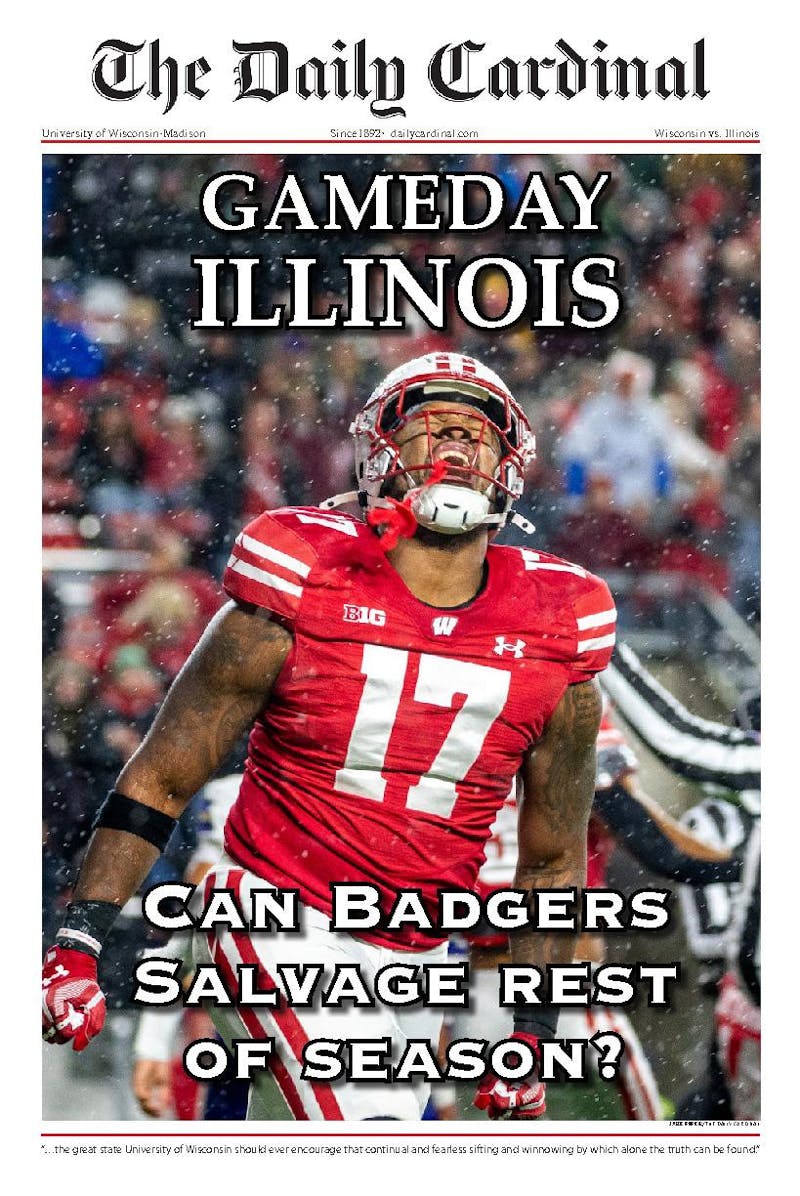With each new blade of green grass that emerges from beneath thin layers of late snowfall, smiles slide onto faces with a bit more ease. However, the return of warm afternoons and whistling robins is a relief too often taken for granted. As sweaters are traded for T-shirts and winter boots for sneakers; as baseball gloves and Frisbees are pulled from storage shelves to relish in the magnificence of the surrounding world, now is also the season to recognize its fragility.
Students have heard about climate change for the better half of their lives on the news, online and even in classes focused on the issue. Still, few grasp their role in the matter or the impact climate change will have on their lives and the lives of those around them.
“We live in an era of man-made climate change,” Vicente Barros, co-chair of Working Group II of the Intergovernmental Panel on Climate Change, said in a statement. “In many cases, we are not prepared for the climate-related risks that we already face.”
The IPCC released a report in March 2014 about how adaptation and mitigation can manage the impacts and risks related to climate change. Adaptation refers to the process of adjusting lifestyles and behaviors to fit environmental changes, while mitigation is the action of reducing the severity of climate change.
The 1,729 experts and government reviewers from 70 countries who authored the report found the risks we face as a result of climate change are made up of three components: vulnerability (lack of preparedness), exposure (people or assets in harm’s way) and the hazards that trigger climatic events.
These risks include a changing sea level, changing wind patterns, coastal erosion, droughts, wildfires and increasing average global temperatures. Each has an immense impact on marine and terrestrial ecosystems as well as personal livelihoods.
The predictions the IPCC outlines in its most recent report hardly differ from those in its 2007 report, according to Paul Robbins, director of the Nelson Institute for Environmental Studies at the University of Wisconsin-Madison. What has changed, however, is the IPCC’s improved ability to speak about uncertainty, which is often confusing to the public.
The IPCC previously struggled to communicate the correlation between climate change and human activity in certain terms. In accordance with cognitive bias, people tend not to act when they perceive uncertainty.
“But there is always uncertainty associated with [scientific research],” Robbins said. “Uncertainty doesn’t mean we’re unsure about the science. Uncertainty simply means we’re unsure about the magnitude.”
For example, Wisconsin is facing a 20 percent increase in precipitation in the near future, according to Robbins. Scientists are unable to say precisely where the rain is going to fall, so they express uncertainty. However, the rain is going to fall and create runoff, damaging the sewage industry as well as the dominant agricultural industry of our state.
The Center for Climatic Research, a branch of the Nelson Institute, is already downscaling research to make findings more applicable to Wisconsin citizens.
“If you put a map of the world in front of a farmer from central Wisconsin, it’s meaningless because it doesn’t pertain to them,” Robbins said. “But if they can find themselves on that map, running with the example of rainfall variability, then they’ll say, ‘OK, I should be thinking about cropping strategies, erosion management, etc.’ This [research] has bottom-line economic interest.”
UW-Madison has already taken steps to minimize harmful environmental behaviors, according to Frank Kooistra, operations coordinator in the Office of Sustainability.
“Sustainability is made up of three components: there are environmental, social and economical aspects,” Kooistra said. “Just because [a proposed solution] is the best solution environmentally, it may not be the best solution in terms of sustainability.”
For example, Kooistra said UW-Madison switched all of the light bulbs on campus to energy-efficient bulbs in 2000.
Kooistra is also an active member of WE CONSERVE, an on-campus program dedicated to conservation and waste elimination. In 2006, WE CONSERVE made a commitment to reduce the university’s energy levels by 20 percent over the following four years.
Kooistra said they exceeded their goal, reducing energy usage by approximately 28 percent by 2010. In fact, energy levels continue to decline despite campus’ expanding square footage.
The reduction is in part credited to a completed renovation of the Charter Street Heating Plant, which produces electricity for campus. The plant received energy-efficient natural gas boilers in the fall of 2013 to replace outdated coal boilers, according to UW-Madison KnowledgeBase.
Nevertheless, Kooistra remains dissatisfied with UW-Madison’s carbon emissions.
“We could reduce our carbon footprint a lot more, and we will in time as people become more aware of what they can do individually,” he said. “Ride a bike. Ride the bus.”
When asked about UW-Madison’s progress since 2010, Kooistra said the biggest roadblock is students’ lack of recycling. He speculates 22 to 28 percent of the trash UW-Madison sends to the landfill is recyclable.
WE CONSERVE provided every residence hall with trash and recycling bins to resolve this issue, but Kooistra said many students still neglect to separate their waste into the proper containers.
This puts UW-Madison in stark contrast with other campuses such as Ohio State University, where students divert 98 percent of their trash compared to approximately 35 percent here, according to Kooistra.
But why should Madison students feel a responsibility to pay attention to climate change? Robbins said any student concerned with social justice should look at the role climate change plays in deteriorating global conditions.
The World Health Organization recently called air pollution the “single largest environmental health risk” after they calculated 7 million people died prematurely in 2012 due to health problems associated with air pollution such as heart disease, strokes and lung cancer.
“People who are socially, economically, culturally, politically, institutionally or otherwise marginalized are especially vulnerable to climate change,” according to the IPCC report. “This heightened vulnerability… is the product of intersecting social processes that result in inequalities in socioeconomic status and income, as well as in exposure.”
One UW-Madison student who has already taken action to fight these risks, UW-Madison junior Brian Elvert serves as the chair of Climate Action 350 UW, a registered student organization committed to raising awareness about climate change.
Elvert traveled to Washington, D.C., March 2 to walk the few miles from Georgetown to Lafayette Park alongside 1,200 others in a civil disobedience protest against constructing the Keystone XL pipeline. He was also among 389 protesters arrested that day.
When asked why he would to go to such lengths to call attention to this issue, Elvert said he feels he should leverage his privilege as an American college student with many opportunities to serve a greater good.
“I feel it’s an obligation for me to use my power as a citizen to stop [climate change],” Elvert said. "This is going to affect so many people, especially the most vulnerable. It’s immoral to not do anything.”
Along with other members of the UW-Madison staff working to educate others about climate change, Elvert said he feels there is a general sense of apathy toward recycling and carbon-footprint reduction.
“There doesn’t seem to be a strong sense of civic engagement or activism as much as there could be,” Elvert said. “We have power as students, why not use that power as a large student body with something to say?”
With the state Capitol just blocks from campus, UW-Madison students are in a unique position to ignite change in the Madison community and beyond. As the frozen earth yields to soft, budding grass, now is the time to draw inspiration from the striking beauty of nature that sustains and accentuates everyday life, and make an effort to defend it.






